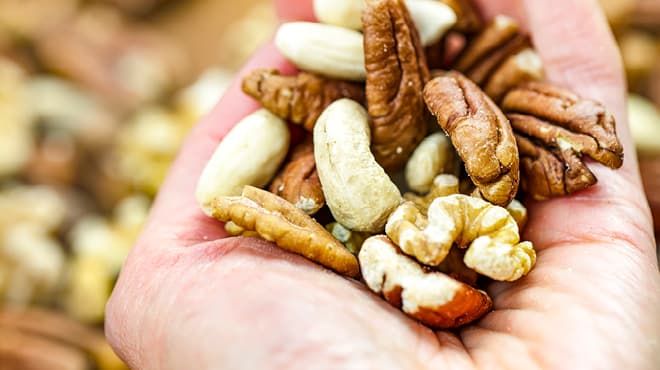Recent Posts
-

-
 Patient StoriesA lifesaver saved: An EMS veteran’s journey from rescue to recoveryNovember 14, 2025
Patient StoriesA lifesaver saved: An EMS veteran’s journey from rescue to recoveryNovember 14, 2025 -

Superfoods: Why you should eat cruciferous vegetables

Since childhood, people may have told you to "Eat your vegetables because they're good for you." Although you might prefer to skip them, substantial evidence supports the reason behind consuming a variety of veggies.
One group of vegetables, known as cruciferous vegetables, is a powerhouse of vitamins, minerals, antioxidants and other phytochemicals. Research has found that these components can reduce the risk of many of the diseases prevalent today.
Cruciferous vegetables contain a potent phytochemical called sulforaphane. Studies show this phytochemical to be a powerful antioxidant and anti-inflammatory, which aids in preventing several types of cancer.
Some studies also indicate a correlation between eating vegetables high in sulforaphane and a reduction in depression and obesity, as well as an improvement in pain management and symptoms related to cardiovascular disease.
Superfoods in this group include:
These nutrition-packed vegetables range from 5 to 14 calories per ounce. Consuming cruciferous vegetables, which are high in fiber, supports a healthy diet and helps reduce obesity.
Cruciferous vegetables are versatile. Eat them raw or cooked, as a main or side dish and in salads. These superfoods can be mashed or pureed to thicken soups or used as the main ingredient in a pizza crust.
Here are easy recipes packed with cruciferous vegetables:
Roasted broccoli and cauliflower
By Mayo Clinic
Serves 4
4 cups broccoli, cut into quarter-size florets
4 cups cauliflower, cut into quarter-size florets
1 to 2 tablespoons olive oil
1 clove garlic, minced
1/2 cup shredded Parmesan cheese
Pinch of ground black pepper
Pinch of salt
Preheat oven to 400 F. Place broccoli and cauliflower in a bowl and drizzle with garlic and olive oil. Season with salt and pepper. Sprinkle half of the Parmesan cheese over the vegetables. Spread the mixture on a sheet pan. Bake for 20–30 minutes, stirring after 15 minutes.
Remove the pan from the oven when the florets are crispy and brown. Sprinkle the other half of the Parmesan cheese over the mixture and serve.
Nutritional per cup serving: 100 calories, 4 grams fat, 7 grams carbohydrates, 6 milligrams cholesterol, 3 grams dietary fiber, 163 milligrams sodium.
Brussels sprouts with shallots and lemon
By Mayo Clinic
Serves 4
3 teaspoons extra-virgin olive oil, divided
3 shallots, thinly sliced (about 3 tablespoons)
1/4 teaspoon salt, divided
1 pound Brussels sprouts, trimmed and cut into quarters
1/2 cup no-salt-added vegetable stock or broth
1/4 teaspoon finely grated lemon zest
1 tablespoon fresh lemon juice
1/4 teaspoon freshly ground black pepper
In a large, nonstick frying pan, heat 2 teaspoons of the olive oil over medium heat. Add the shallots and saute until soft and lightly golden, about 6 minutes. Stir in 1/8 teaspoon salt. Transfer to a bowl and set aside.
Heat the remaining 1 teaspoon of olive oil over medium heat in the same frying pan. Add the Brussels sprouts and saute for about 3 to 4 minutes until they brown. Add the vegetable stock and bring to a simmer. Cook, uncovered, for 5 to 6 minutes until the Brussels sprouts are tender. Return the shallots to the pan. Stir in the lemon zest and juice, 1/8 teaspoon salt, and pepper. Serve immediately.
Nutritional per 1 1/4 cup serving: 104 calories, 4 grams fat, 12 grams carbohydrates, 0 milligrams cholesterol, 5 grams dietary fiber, 5 grams protein, 191 milligrams sodium.
By Mayo Clinic Health System staff.



